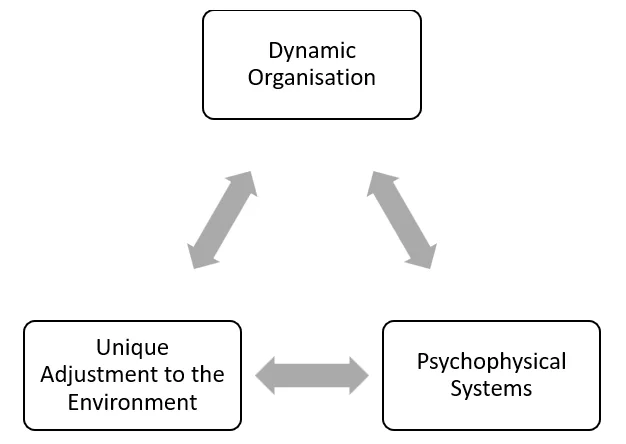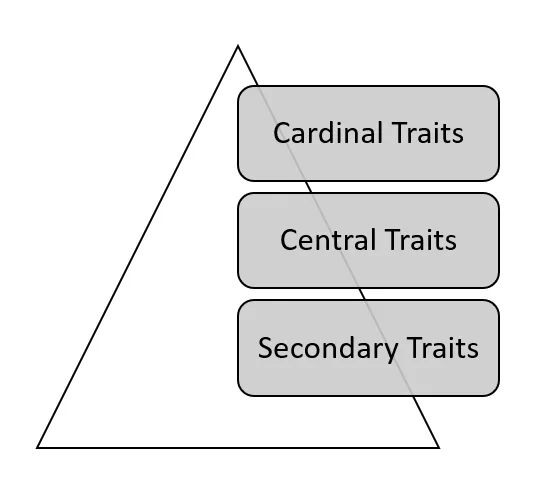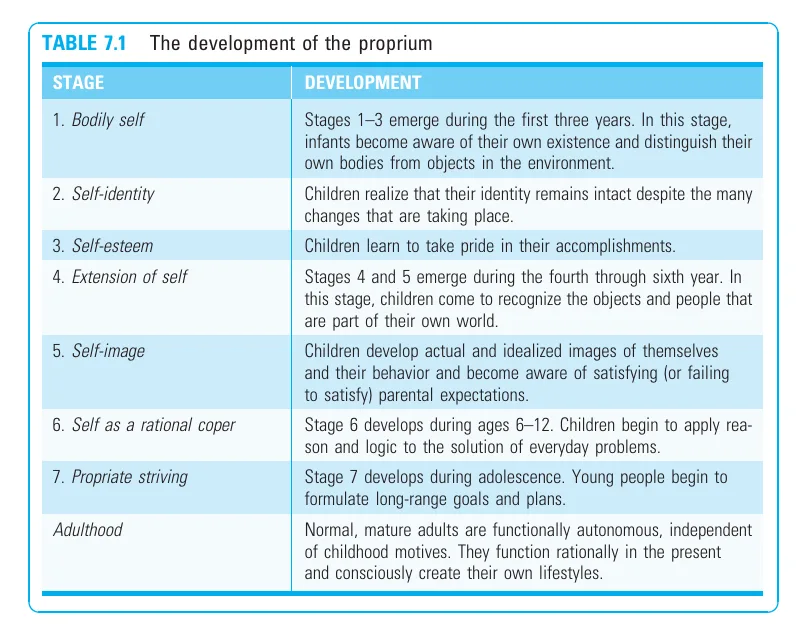Introduction
Allport’s theory of personality is one of the formost theories that explain personality through traits. Personality according to Allport consists of traits that make up the behaviour of the individual.
Gordon Willard Allport was an influential American psychologist, renowned for his work on personality and for being one of the founders of Personality Psychology. His Theory of Personality is considered one of the more scientific approaches to understanding human behavior, especially through the concept of traits.
Allport’s theory emphasized the role of biology to some extent, suggesting that children are born with certain reflexes. Over time, these reflexes develop into habits, and as habits become ingrained through repeated use, they eventually evolve into traits, which form the core of an individual’s personality.
What is Personality?
The term “personality” comes from the Latin word “persona”, meaning a mask worn by an actor, which reflects how individuals present themselves to the world.
According to the American Psychological Association (APA), personality refers to individual differences in patterns of thinking, feeling, and behaving. These differences are relatively stable over time and distinguish one individual from another.
Read More- What is Personality
Allport’s Concept of Traits
Traits are the central element of Allport’s theory. He described traits as relatively permanent characteristics that shape an individual’s behavior across various situations. These traits guide how individuals respond to stimuli and enable consistency in their actions.
Key Features of Traits-
- Real and Observable- According to Allport, traits are not abstract concepts but real entities that exist within individuals. They can be observed through consistent patterns of behavior.
- Guiding Behavior- Traits direct and influence how individuals behave in particular situations. For example, a person with the trait of extroversion will consistently seek social interaction across different environments.
- Empirically Verified– Traits can be measured and studied scientifically through observation and assessment of behavior.
- Interconnectedness of Traits– Traits are not entirely independent of one another. They often overlap, and different traits may interact to influence behavior in complex ways.
- Consistency and Stability– While traits are stable over time, they can evolve. This means that although a person’s core traits remain relatively constant, life experiences can lead to changes in their intensity or manifestation.
- Individual Differences– Allport emphasized that traits vary in strength and combination across individuals, leading to differences in personality. For example, while one person may be highly conscientious, another may exhibit less of this trait.
Allport’s Definition of Personality
Gordon Allport (1938) gave one of most comprehensive definition of personality. He defined personality as the dynamic organization within the individual of those psycho-physical systems that determine his unique adjustment to his environment. This definition leads us further to look deeper into the following aspects-

Allport’s Definition of Personality
- Psychophysical Systems
Allport highlights the “psychophysical” nature of personality, which means personality is a system that includes both psychological and physical elements. The physiological aspects include systems like the endocrine system, which regulates hormones that influence mood, emotions, and behavior. For example- adrenaline plays a role in the body’s fight-or-flight response during stressful situations. This physical reaction, governed by the endocrine system, interacts with psychological factors like an individual’s emotional response to stress (e.g., anxiety or excitement).
On the psychological side, factors like traits, temperament, and intellect play critical roles. For instance, a person with the personality trait of openness to experience (a psychological factor) may be more curious and adventurous, seeking out novel experiences. This, in turn, interacts with the body’s physiological systems—such as increased dopamine activity (a neurochemical factor linked to pleasure and reward)—to create a more dynamic personality type.
- Dynamic Organization
The term “dynamic” emphasizes that personality is not a static entity; it is constantly evolving. This ongoing development can be influenced by experiences, environment, and changes in biological processes.
A good example of this can be seen in the developmental trajectory of personality. As individuals age, their personalities often shift. A child who may have been more impulsive or emotional might grow into a more composed and conscientious adult. For example, longitudinal studies show that personality traits like conscientiousness tend to increase with age, while traits like neuroticism tend to decrease. This process occurs slowly and is influenced by a variety of factors such as life experiences, brain maturation, and social roles.
The Baltimore Longitudinal Study of Aging (BLSA) provides evidence that personality traits do change over time, particularly in older adults, suggesting that this “dynamic organization” is shaped by both individual experiences and the aging process. Even major life events such as trauma, career shifts, or significant relationships can influence how someone’s personality continues to develop.
- Unique Adjustment to Environment
Allport stresses that each individual has a unique way of adjusting to their environment, which is shaped by their personal experiences and psychological traits. Even identical twins, who share the same genetic makeup, often display considerable differences in personality due to the unique experiences they have over time. This indicates that personality is not solely determined by genetics, but also by how individuals interact with their surroundings.
An example of this can be found in the Minnesota Twin Study, which compared identical twins raised together versus those raised apart. While there were similarities in traits due to shared genetics, twins raised apart displayed differences in personality that could be attributed to their unique environmental influences. For example, one twin raised in a rural environment may develop traits like self-reliance and resilience, while the other, raised in an urban setting, may become more socially aware or outgoing.
Another example can be found in cross-cultural psychology. Individuals from collectivist cultures (e.g., Japan, China) often exhibit personality traits like interdependence and group harmony, whereas those from individualist cultures (e.g., the United States) tend to emphasize self-expression and individual achievement. These differences arise from the varying social environments and cultural norms in which people are raised, highlighting that environment plays a crucial role in personality formation.
Allport’s Theory of Personality
Gordon Allport and Henry Odbert listed around 17953 words in the English language that refers to personality. These words could be used to describe people. This study (1936) became the empirical and conceptual base of the Five-Factor Theory at a later stage. Based on their investigation (Allport reduced the listed words to 4500 trait-like words), they formulated ‘Allport’s theory of personality ‘. According to their theory, three types of traits govern our personality. They named these three categories of traits as cardinal traits, central traits, and secondary traits. Allport organized these traits in a hierarchy.

3 Personality Traits
1. Cardinal Traits
These are the dominant traits of one’s personality. They stand at the top of Allport’s trait hierarchy. These traits are the master controller of one’s personality. These traits may dominate one’s personality to such an extent that the person becomes known for those traits only.
Such as Mother Teresa for altruism and M.K. Gandhi for his honesty.
Almost all of a person’s activities are traced to this trait’s influence. For instance, Compassion can be a cardinal trait in one person. This compassion manifests in almost all aspects of the individual’s behavior. If he sees a child begging, he will offer her some eatable or money. Such a person may also join many NGOs that are dealing with orphans and poor people. He would write in newspapers and magazines about the conditions of such people and call for help. So his behavior will be reflecting this unique disposition of compassion dominantly in his behavior.
Thus, Cardinal traits have an overwhelming influence on the behavior of the individual. These traits are at the very core of the personality. According to Allport, these traits are rare i.e., very few people have personalities dominated by cardinal traits. A majority of people have a personality composed of multiple traits.
2. Central Traits
They come second in the hierarchy. According to Allport, every person possesses 5-10 central traits in varying degrees. These are also called the building blocks of personality.
To cite an example, a person being outgoing, sociable, etc. In other words, central traits are those tendencies that a person often expresses.
People around the person can easily notice these kinds of traits. Are responsible for shaping our personality. When you describe someone, you are likely to use words that refer to these central traits: aristocratic, street smart, intelligent, loyal, dependable, timid, aggressive, arrogant, etc. One of these is indeed dominant while others do dominate but do not have the overriding influence on the person’s behavior.
Through such traits, one can define the personality of the individual concerned. These central traits reveal the structure and organization of personality.
3. Secondary Traits
These traits are less generalized, less consistent, and less relevant as compared to cardinal or central traits. These are called secondary traits. To give an example, the food preferences of an individual are quite varying in different times and situations. Or an aggressive child may not speak much in front of his/her teacher.
These are less relevant traits of personality. These are situational or circumstantial traits. Are responsible for behaviors that are incongruent to an individual’s usual behavior.
According to Allport’s theory of personality these are “aroused by a narrower range of equivalent stimuli and they issue into a narrower range of equivalent responses”. These are not overwhelming like the cardinal traits. Yet it can reflect in the various preferences and attitudes of the individual concerned.
These traits are specific to situations. These are rather too general and are not as consistent as the cardinal traits. They can also change in certain special situations. In Allport’s theory of personality, he considered traits more like intervening variables that occur between the stimulus situation and response of the person.
Functional Autonomy
Allport did not believe in looking too much into a person’s past in order to understand his present. This belief is most strongly evident in the concept of functional autonomy- Your motives today are independent (autonomous) of their origins. In other words, the path/means which we choose to achieve a goal is now itself a goal.
For example, a person develops and inculcates discipline and hard-work in his life to become rich and famous. But even after becoming rich and famous he continues to live with discipline and hard-work. Actually discipline and hard-work are no longer the means for being rich and famous but they have replaced the goal. ‘What is now’ (present) is more important than the past or the future.
A person may have been persuaded by parents to become a lawyer. As the individual practiced law, it was interesting and satisfying. At one point there was no need for the parents to convince him any more. Being a lawyer and practicing law by itself has become a goal for this individual.
Personality Development
Allport viewed personality development as a lifelong process, with the childhood years being particularly critical for laying the foundation of one’s personality. As individuals grow, they move through various stages of self-awareness and self-perception, eventually reaching a mature, healthy personality in adulthood. This process involves both biological and psychological factors, as well as the influence of social relationships, especially the early bond with the mother.
Personality Development in Childhood
Early childhood is seen as a critical period for the formation of basic personality structures. At this stage, children are largely driven by biological needs, such as hunger and comfort, and they are influenced by external factors like their caregivers and environment.
As the child grows, they begin to develop a more autonomous sense of self, meaning they gradually shift from dependency on others to having an independent identity and an awareness of their own personal traits and preferences. The development of personality in childhood is not static, it is dynamic and evolving, laying the groundwork for adult personality.
Stages of Personality Development

Stages of Personality Development
Allport proposed that personality develops through a series of progressive stages, each contributing to a deeper understanding of the self-
- The Bodily Self (Infancy)- This is the initial stage where a child becomes aware of their own body and its boundaries. This stage is fundamental because it establishes the idea of “me” versus “not me,” helping the child differentiate themselves from their surroundings.
- Self-Identity (18 months–3 years)- During this stage, the child starts to recognize themselves as a distinct individual, separate from others. This realization is crucial for developing a stable sense of identity and continuity over time.
- Self-Esteem (3–4 years)- As children begin to explore the world and try new tasks, they start to develop self-esteem—the pride and confidence in their abilities. Successfully achieving goals leads to feelings of competence, while failures might lead to frustration or insecurity.
- Extension of Self (4–6 years)- At this stage, children become aware of their possessions and relationships. They start to understand that certain things, people, and places belong to them, contributing to their expanding sense of self.
- Self-Image (6–12 years)- Children now form an ideal self, which is shaped by social expectations and the roles they are expected to play. They start to consider how they are perceived by others, which plays a role in shaping their behavior and self-concept.
- Self as a Rational Coper (6–12 years)- At this stage, children begin to recognize their ability to think, reason, and solve problems. This rationality helps them cope with life’s challenges, contributing to their growing sense of competence and control over their environment.
- Propriate Striving (Adolescence Onward)- As individuals enter adolescence, they begin to form long-term goals and strive for purposes that reflect their deeper values and desires. This stage marks the transition toward a mature, self-directed personality, driven by internal motivations.
The Importance of the Infant–Mother Bond
According to Allport, the relationship between the infant and the mother is vital in personality development. A strong, healthy bond provides the child with emotional security and trust, laying the foundation for a stable personality.
The mother’s responsiveness to the child’s needs fosters a sense of attachment and safety, which promotes the child’s exploration of their environment and development of autonomy. A secure mother-child bond supports the growth of positive self-esteem, emotional regulation, and social competence.
The Healthy Adult Personality

Characteristics of a Healthy Person
Allport believed that a mature personality involves more than just the absence of psychological issues. He described several key characteristics that mark a healthy adult personality-
- Self-Extension- A healthy individual shows a deep interest in others, in social causes, and in the world around them. Their concerns extend beyond their immediate needs and include larger societal and relational issues.
- Self-Objectification- This refers to the individual’s ability to reflect on themselves and recognize their own limitations. They can see themselves objectively, acknowledging both strengths and weaknesses without undue pride or shame.
- Warm Relating- A mature personality is capable of forming deep, intimate relationships with others. They are open to close emotional bonds, displaying empathy, compassion, and affection in their interactions.
- Realistic Perception- Healthy adults view the world with realism—they are not overly idealistic or pessimistic. They can assess situations objectively and adapt to life’s challenges without distorting reality.
- Emotional Security- Emotional stability and self-acceptance are hallmarks of a well-developed personality. These individuals exhibit calmness and resilience in the face of stress, showing a balanced emotional response.
- Philosophical Sense of Humor- Allport also emphasized the importance of having a philosophical sense of humor, meaning that healthy individuals can laugh at themselves and recognize the absurdities of life without becoming cynical or negative.
Take a Short Test on The Theory– Allport’s Trait Theory (MCQs)
Strengths of Allport’s Theory
- Emphasis on Uniqueness and Individuality– By focusing on personal dispositions rather than just common traits, Allport provided a framework that accounts for the distinctiveness of personality. His approach avoids overgeneralisation.
- Holistic and Integrative Approach– Allport’s theory integrates both biological (physical) and psychological factors, offering a more holistic view of personality development.
- Concept of Functional Autonomy– This concept also helped to shift the focus of psychology from past-oriented (Freudian) perspectives to a present-oriented and goal-directed view of personality.
- Healthy Adult Personality Characteristics– Allport’s description of the healthy adult personality is an insightful and optimistic view of human nature.
Weaknesses of Allport’s Theory
- Lack of Empirical Rigor- Critics argue that Allport’s theory is difficult to test scientifically because of its reliance on individual uniqueness. As a result, it is challenging to apply his concepts in systematic, quantitative research that can yield reliable, generalizable results.
- Trait Theory Inconsistencies- Allport’s focus on traits as stable and enduring characteristics has been criticized for failing to account for situational variability. While he recognized the uniqueness of personal dispositions, his theory does not fully explain how behavior can change dramatically in different contexts or situations.
- Neglect of Developmental Processes- Although Allport outlined several stages of development, his theory does not provide a detailed, coherent explanation of how personality evolves across the lifespan. His stages, such as the bodily self, self-esteem, and self-image, while insightful, are not grounded in systematic research or tied to clear biological or cognitive developmental processes.
- Insufficient Attention to Social and Cultural Factors- Critics argue that personality is deeply intertwined with social context, and failing to account for these forces limits the explanatory power of the theory.
- No Unified Personality Model– Unlike other theorists who presented clear, systematic models (e.g., Freud’s psychodynamic theory or Erikson’s psychosocial stages), Allport’s work lacks a unified framework. His theory is more descriptive than explanatory, focusing on describing traits and behaviors rather than providing a model of how personality operates as a cohesive system.
- Overemphasis on the “Healthy” Personality- While Allport’s focus on the healthy, mature personality was innovative, it also drew criticism for being overly idealistic. His description of traits like self-extension and realistic perception might be seen as an idealized view of personality, which may not apply to most individuals.
References
Ciccarelli, S. K.; White J. N. Adapted by Girishwar Misra (2018). Psychology (5th Edition). Pearson.
Allport, G. W. (1937). Personality: A psychological interpretation. New York: Holt, Rinehart & Winston.
Schultz, D. P., & Schultz, S. E. (2016). Theories of Personality (11th ed.). Cengage Learning.
Feist, J., Feist, G. J., & Roberts, T.-A. (2021). Theories of Personality (10th ed.). McGraw-Hill Education.
Pervin, L. A., & John, O. P. (2001). Handbook of Personality: Theory and Research (2nd ed.). Guilford Press.
Niwlikar, B. A. (2022, January 27). Allport’s Theory of Personality- Discover the 3 Insightful Catagories of Personality. Careershodh. https://www.careershodh.com/allports-theory-of-personality/
